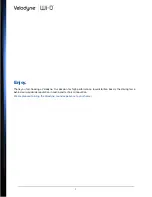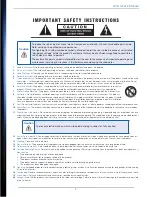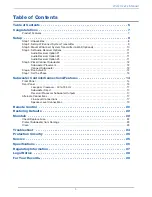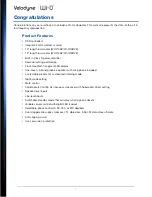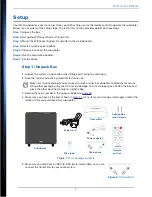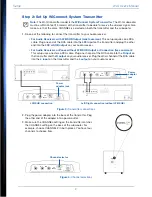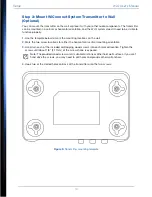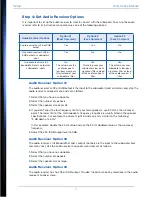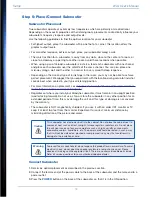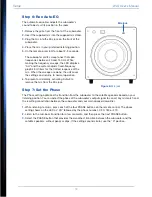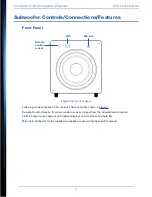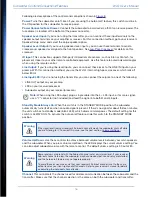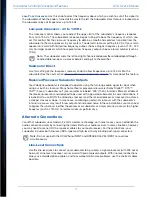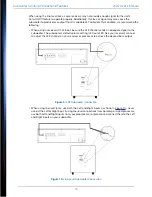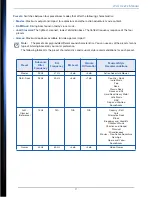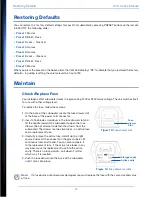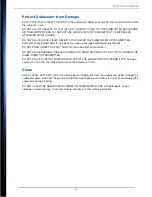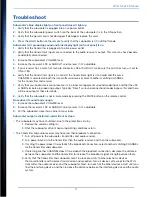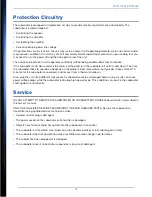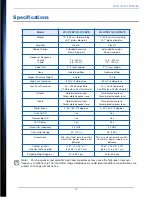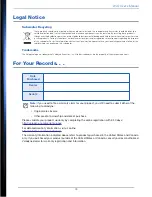
16
Subwoofer Controls/Connections/Features
Wi-Q User’s Manual
Following are descriptions of the controls and connections shown in
Figure 8
.
Power:
Turns the subwoofer on/off. Even if you are using the Auto on/off feature, this switch must be in
the ON position for the subwoofer to receive power.
Power Connector/Fuse Drawer:
Connects the subwoofer to a wall outlet so that it can receive power. The
fuse drawer is located at the bottom of the power connector.
Speaker Level Input:
If you’re not using the transmitter, you can connect these input terminals to the
speaker output terminals on your amplifier or receiver. For this connection method, go to your receiver’s
Speaker Setup menu and select the Large speaker option.
Speaker Level Output:
If you’re using speaker-level inputs, you can use these terminals to send a
crossed-over speaker-level signal to the front speakers. See
Low-Pass Crossover:
for details on this
crossover.
IR Input:
This connection supports third-party infrared remote sensors, such as Elan or Xantech, for
placement closer to your other remote controlled equipment. Use this feature to avoid awkward angles
when using the remote control.
Line Output:
If you’re using line-level inputs, you can connect these jacks to the LINE IN input on your
preamp. With this connection method, you use the Wi-Q’s internal high-pass crossover, which rolls off
below 80 Hz.
Line Input/LFE:
If you’re not using the transmitter, you can connect these jacks to one of the following:
•
LINE OUT output on your preamp
•
LFE on your receiver/processor
•
Subwoofer output on your receiver/processor
Note:
When using the LFE output, plug a single cable into the
L
– LFE input, or for more signal,
use a “Y” connector (not included) and feed the signal into both
R
and
L
inputs.
Stand By Mode/Always On:
When this switch is in the STANDBY MODE position, the subwoofer
automatically turns itself on when an audio signal is present. If there’s no signal for about thirteen minutes,
the unit switches to standby mode (blank LED), which draws minimal power. The default setting for this
switch is ALWAYS ON. To activate the Auto on/off feature, slide this switch to the STANDBY MODE
position.
Volume Up/Down:
Use these controls to achieve balanced volume levels between your main speakers
and the subwoofer. When you press Volume Up/Down, the LED displays the current volume setting. You
can also adjust subwoofer volume with the remote control. The default volume setting is 30 out of 80.
Channel:
This control sets the channel used for wireless communication between the subwoofer and the
transmitter. Make sure that the channel selection is the same on both the subwoofer and transmitter.
Warning
If the signal level from your receiver’s Sub-out channel is weak, the subwoofer shuts off while
you are listening to it. To correct this issue, see the next section,
Volume Up/Down:
.
Warning
Some receivers are preset with the Sub-out channel set at a minimum level. If your receiver
Sub-out channel is too low, the subwoofer may have weak output, sound noisy or distorted,
and the Auto on/off feature may not operate properly.
To avoid these issues, make sure that your receiver’s Sub-out channel is set to the same
output level as your front right and left channels. Refer to your receiver’s manual for details
on adjusting the individual channel levels.

